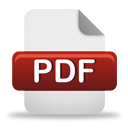

CLC number: TS255.1
On-line Access: 2024-08-27
Received: 2023-10-17
Revision Accepted: 2024-05-08
Crosschecked: 2017-09-15
Cited: 0
Clicked: 7017
Bo Zou, Yu-juan Xu, Ji-jun Wu, Yuan-shan Yu, Geng-sheng Xiao. Phenolic compounds participating in mulberry juice sediment formation during storage[J]. Journal of Zhejiang University Science B,in press.Frontiers of Information Technology & Electronic Engineering,in press.https://doi.org/10.1631/jzus.B1600461 @article{title="Phenolic compounds participating in mulberry juice sediment formation during storage", %0 Journal Article TY - JOUR
酚类物质参与桑果汁贮藏期间沉淀形成的研究创新点:首次研究了桑果汁贮藏期间上清和沉淀中酚类物质的变化规律,阐明了酚类物质参与桑果汁沉淀形成的机制,明确了花色苷是沉淀形成的主要物质基础。 方法:对贮藏期间桑果汁的上清和沉淀进行了分离,提取了游离态和结合态多酚,对总酚含量的变化进行了研究,并采用高效液相色谱法和高效液相色谱质谱联用法对酚类化合物的组成进行了定性和定量分析。 结论:随着贮藏时间的延长,桑果汁的沉淀量逐渐增加(图1),果汁上清液和沉淀游离酚的总酚含量逐渐下降,而沉淀结合酚则呈现上升趋势(图2)。上清液和沉淀中游离态花色苷分别从938.60和235.60 mg/L下降到2.30和1.74 mg/L(表2),上清中黄酮类物质也有所下降,而沉淀中结合态的没食子酸、原儿茶酸、咖啡酸和芦丁的含量则呈上升趋势(表2)。桑果汁贮藏8周后,沉淀中的花色苷占酚类物质总量的67.2%(表2)。综上所述,酚类物质参与了桑果汁沉淀的形成,其中花色苷起主要作用。 关键词组: Darkslateblue:Affiliate; Royal Blue:Author; Turquoise:Article
Reference[1]Acostaestrada, B.A., Gutiérrez-Uribe, J.A., Serna-Saldívar, S.O., 2014. Bound phenolics in foods, a review. Food Chem., 152:46-55.  [2]Álvarezfernández, M.A., Hornedo-Ortega, R., Cerezo, A.B., et al., 2016. Determination of nonanthocyanin phenolic compounds using high-resolution mass spectrometry (UHPLC-Orbitrap-MS/MS) and impact of storage conditions in a beverage made from strawberry by fermentation. J. Agric. Food Chem., 64(6):1367-1376.  [3]Bao, T., Xu, Y., Gowd, V., et al., 2016. Systematic study on phytochemicals and antioxidant activity of some new and common mulberry cultivars in China. J. Funct. Foods, 25:537-547.  [4]Du, Q., Zheng, J., Xu, Y., 2008. Composition of anthocyanins in mulberry and their antioxidant activity. J. Food Compos. Anal., 21(5):390-395.  [5]Fang, Z., Zhang, M., Tao, G., et al., 2006. Chemical composition of clarified bayberry (Myrica rubra Sieb. et Zucc.) juice sediment. J. Agric. Food Chem., 54(20):7710-7716.  [6]Farah, A., Duarte, G., 2015. Chapter 87 Bioavailability and Metabolism of Chlorogenic Acids from Coffee A2 Preedy, Victor R. Coffee in Health and Disease Prevention. Academic Press, San Diego, p.789-801.  [7]Fazaeli, M., Yousefi, S., Emam-Djomeh, Z., 2013. Investigation on the effects of microwave and conventional heating methods on the phytochemicals of pomegranate (Punica granatum L.) and black mulberry juices. Food Res. Int., 50(2):568-573.  [8]Imran, M., Khan, H., Shah, M., et al., 2010. Chemical composition and antioxidant activity of certain Morus species. J. Zhejiang Univ.-Sci. B (Biomed. & Biotechnol.), 11(12):973-980.  [9]Isabelle, M., Lee, B.L., Ong, C.N., et al., 2008. Peroxyl radical scavenging capacity, polyphenolics, and lipophilic antioxidant profiles of mulberry fruits cultivated in southern China. J. Agric. Food Chem., 56(20):9410-9416.  [10]Jia, Z.S., Tang, M.C., Wu, J.M., 1999. The determination of flavonoid contents in mulberry and their scavenging effects on superoxide radicals. Food Chem., 64(4):555-559.  [11]Kang, T.H., Hur, J.Y., Kim, H.B., et al., 2006. Neuroprotective effects of the cyanidin-3-O-β-  [12]Kim, J.G., Kim, H.L., Kim, S.J., et al., 2013. Fruit quality, anthocyanin and total phenolic contents, and antioxidant activities of 45 blueberry cultivars grown in Suwon, Korea. J. Zhejiang Univ.-Sci. B (Biomed. & Biotechnol.), 14(9):793-799.  [13]Lacava, E.L.M., Sgroppo, S.C., 2015. Evolution during refrigerated storage of bioactive compounds and quality characteristics of grapefruit [Citrus paradisi (Macf.)] juice treated with UV-C light. LWT-Food Sci. Technol., 63(2):1325-1333.  [14]Liu, C.J., Lin, J.Y., 2014. Protective effects of strawberry and mulberry fruit polysaccharides on inflammation and apoptosis in murine primary splenocytes. J. Food Drug Anal., 22(2):210-219.  [15]Liu, C.Y., Lü, R.H., Li, J., et al., 2014. Characterization and expression profiles of MaACS and MaACO genes from mulberry (Morus alba L.). J. Zhejiang Univ.-Sci. B (Biomed. & Biotechnol.), 15(7):611-623.  [16]Mena, P., Sánchez-Salcedo, E.M., Tassotti, M., et al., 2016. Phytochemical evaluation of eight white (Morus alba L.) and black (Morus nigra L.) mulberry clones grown in Spain based on UHPLC-ESI-MSN metabolomic profiles. Food Res. Int., 89:1116-1122.  [17]Mouls, L., Fulcrand, H., 2012. UPLC-ESI-MS study of the oxidation markers released from tannin depolymerization: toward a better characterization of the tannin evolution over food and beverage processing. J. Mass Spectrom., 47(11):1450-1457.  [18]Natic, M.M., Dabic, D.C., Papetti, A., et al., 2015. Analysis and characterisation of phytochemicals in mulberry (Morus alba L.) fruits grown in Vojvodina, North Serbia. Food Chem., 171:128-136.  [19]Nowicka, P., Wojdyło, A., 2016. Stability of phenolic compounds, antioxidant activity and colour through natural sweeteners addition during storage of sour cherry puree. Food Chem., 196:925-934.  [20]Oliveira, A., Almeida, D.P.F., Pintado, M., 2014. Changes in phenolic compounds during storage of pasteurized strawberry. Food Bioproc. Technol., 7(6):1840-1846.  [21]Özgen, M., Serçe, S., Kaya, C., 2009. Phytochemical and antioxidant properties of anthocyanin-rich Morus nigra and Morus rubra fruits. Sci. Hortic.-Amsterdam, 119(3):275-279.  [22]Pérezgregorio, M.R., Regueiro, J., Alonso-González, E., et al., 2011. Influence of alcoholic fermentation process on antioxidant activity and phenolic levels from mulberries (Morus nigra L.). LWT-Food Sci. Technol., 44(8):1793-1801.  [23]Prakash, S., Iturmendi, N., Grelard, A., et al., 2016. Quantitative analysis of Bordeaux red wine precipitates by soid-state NMR: role of tartrates and polyphenols. Food Chem., 199:229-237.  [24]Rentzsch, M., Schwarz, M., Winterhalter, P., et al., 2007. Formation of hydroxyphenyl-pyranoanthocyanins in Grenache wines: precursor levels and evolution during aging. J. Agric. Food Chem., 55(12):4883-4888.  [25]Reque, P.M., Steffens, R.S., Jablonski, A., et al., 2014. Cold storage of blueberry (Vaccinium spp.) fruits and juice: anthocyanin stability and antioxidant activity. J. Food Compos. Anal., 33(1):111-116.  [26]Sadilova, E., Stintzing, F.C., Carle, R., 2006. Thermal degradation of acylated and nonacylated anthocyanins. J. Food Sci., 71(8):C504-C512.  [27]Sadilova, E., Carle, R., Stintzing, F.C., 2007. Thermal degradation of anthocyanins and its impact on color and in vitro antioxidant capacity. Mol. Nutr. Food Res., 51(12):1461-1471.  [28]Sánchezsalcedo, E.M., Mena, P., García-Viguera, C., et al., 2015. Phytochemical evaluation of white (Morus alba L.) and black (Morus nigra L.) mulberry fruits, a starting point for the assessment of their beneficial properties. J. Funct. Foods, 12:399-408.  [29]Siriwoharn, T., Wrolstad, R.E., Durst, R.W., 2005. Identification of ellagic acid in blackberry juice sediment. J. Food Sci., 70(3):C189-C197.  [30]Sojka, M., Macierzynski, J., Zaweracz, W., et al., 2016. Transfer and mass balance of ellagitannins, anthocyanins, flavan-3-ols, and flavonols during the processing of red raspberries (Rubus idaeus L.) to juice. J. Agric. Food Chem., 64(27):5549-5563.  [31]Sokolletowska, A., Kucharska, A.Z., Winska, K., et al., 2014. Composition and antioxidant activity of red fruit liqueurs. Food Chem., 157:533-539.  [32]Sun, J., Chu, Y.F., Wu, X., et al., 2002. Antioxidant and antiproliferative activities of common fruits. J. Agric. Food Chem., 50(25):7449-7454.  [33]Tajchakavit, S., Boye, J.I., Bélanger, D., et al., 2001. Kinetics of haze formation and factors influencing the development of haze in clarified apple juice. Food Res. Int., 34(5):431-440.  [34]Tomas, M., Toydemir, G., Boyacioglu, D., et al., 2015. The effects of juice processing on black mulberry antioxidants. Food Chem., 186:277-284.  [35]Wang, K., Jin, P., Cao, S., et al., 2009. Methyl jasmonate reduces decay and enhances antioxidant capacity in Chinese bayberries. J. Agric. Food Chem., 57(13):5809-5815.  [36]Wang, L., Sun, X., Li, F., et al., 2015. Dynamic changes in phenolic compounds, colour and antioxidant activity of mulberry wine during alcoholic fermentation. J. Funct. Foods, 18:254-265.  [37]Wolfe, K.L., Kang, X., He, X., et al., 2008. Cellular antioxidant activity of common fruits. J. Agric. Food Chem., 56(18):8418-8426.  [38]Yang, X.L., Yang, L., Zheng, H.Y., 2010. Hypolipidemic and antioxidant effects of mulberry (Morus alba L.) fruit in hyperlipidaemia rats. Food Chem. Toxicol., 48(8-9):2374-2379.  [39]Yen, G.C., Chen, H.Y., 1995. Antioxidant activity of various tea extracts in relation to their antimutagenicity. J. Agric. Food Chem., 43(1):27-32.  [40]Yu, Y., Xu, Y., Wu, J., et al., 2014. Effect of ultra-high pressure homogenisation processing on phenolic compounds, antioxidant capacity and anti-glucosidase of mulberry juice. Food Chem., 153:114-120.  [41]Zhang, W., Han, F., He, J., et al., 2008. HPLC-DADESI-MS/MS analysis and antioxidant activities of nonanthocyanin phenolics in mulberry (Morus alba L.). J. Food Sci., 73(6):C512-C518.  Journal of Zhejiang University-SCIENCE, 38 Zheda Road, Hangzhou
310027, China
Tel: +86-571-87952783; E-mail: cjzhang@zju.edu.cn Copyright © 2000 - 2025 Journal of Zhejiang University-SCIENCE | ||||||||||||||


 ORCID:
ORCID:
Open peer comments: Debate/Discuss/Question/Opinion
<1>